
11 Things You Can Do at Home to Improve Your Wardrobe
Share
More often than not, it’s hard to imagine improving your wardrobe without spending money and it’s easier to think about just going out to shop for something new. However, there are a number of things that you can do at home to really improve your wardrobe and it’s easy on your wallet, too.
At-Home Wardrobe Improvement Techniques
1. Figure Out Your Personal Style Values
What does this mean exactly? Well, have you ever bought something that you regretted after the fact? I certainly have, and I’ve listed them down what they are and why, here. Regrettable purchases often clog up one’s wardrobe and it prevents you from building a wardrobe that reflects your personal style and your values.
Your values may be different from my values. Maybe you want things to be inexpensive or you value that you don’t have to think much about them or you want something that is really long-lasting.
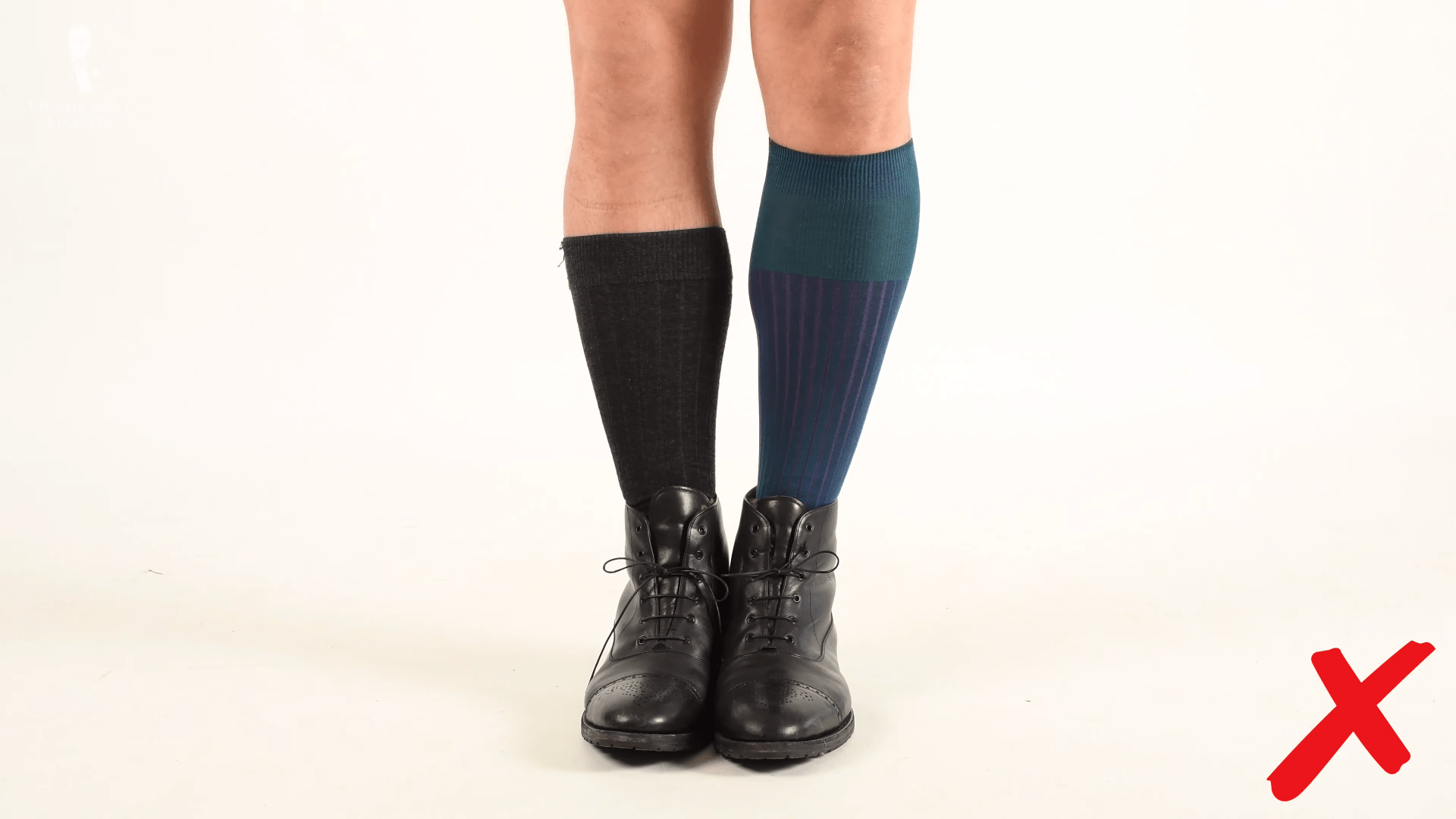
Fort Belvedere socks vs OTC socks
My Personal Style Values
Intentional Purchase
When I grew up, basically, my family bought everything that was on sale or when there was a deal to be had and naturally, that rubbed off on me. So, when I started out, everything I bought was on sale and the higher the discount the better it was. The problem of that approach is that you end up with things that you would have never dreamed of buying and you just added them because they were cheap but you wear them very rarely or never and so the cost per wear is extremely high which is bad. On the flip side, if I force myself to be deliberate and look for something that I know I will get a lot of use out of, the cost per wear goes down and that’s a good thing, which transitions nicely to my next value.
Good Value
As I mentioned, growing up, I didn’t have much money and to this day, I value a good ratio between quality and price. Now, at the end of the day, quality trumps value in my book but nevertheless, you can often try to find brands or things that have a relatively high value for a relatively low price.

(Example) Everyone loves a bargain. Our perception of value as customers increases when there is a sale.
Longevity
When I buy something, I want it to not look shabby after a few years and I want to be able to wear it for a long period of time. I have some things that have lasted for at least a decade and over, which I’ve discussed more about in this list.
Classic Look
I could wear a tie or a sweater or a jacket for 10 or 20 years if they have a style that is grounded and classic and that works for me. If I got something too fashionable, I may look trendy at the moment but 10 years down the line, I look at it and think, Oh my god! What was I thinking?
How To Figure Out Your Values

Pull out the things that you don’t wear or you hate
Ask yourself: Why do I not wear this? And be honest with yourself and in the beginning, that may be hard because you just think you don’t have the right occasion but ask again until you get clarity but why you’re not wearing this piece.
Pull out the pieces you love
On the other hand, pull out your most favorite clothing pieces and ask yourself: Why do I like wearing it? Why do I wear it so often? What makes this piece a great addition to my wardrobe? If you do this exercise properly, you end up with actual values that work for you, and that are truly a reflection of what’s important to you and why you end up wearing something.
Write your values down
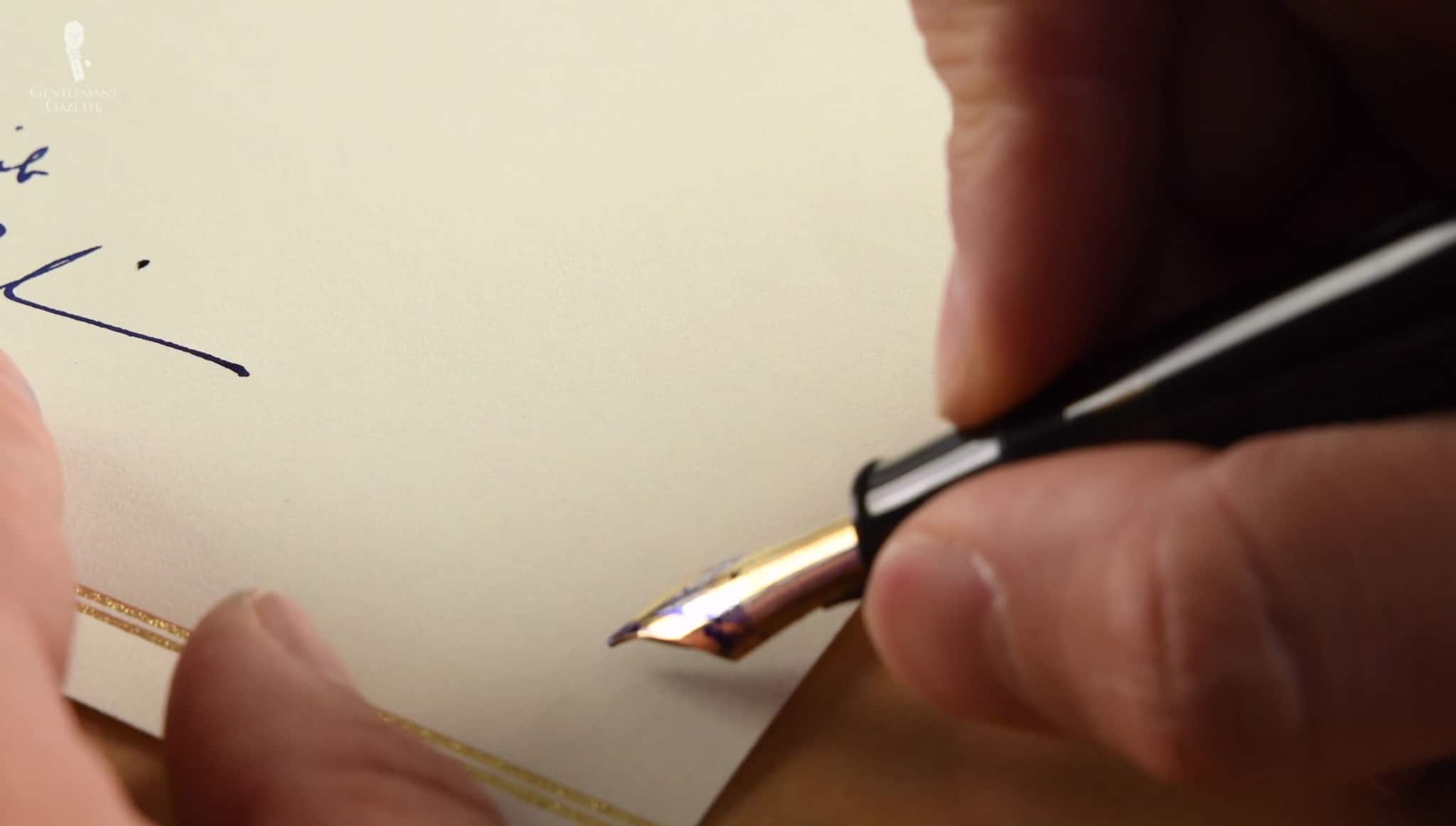
Writing your values can play an important role in decision making
Maybe on a checklist on your phone or on a piece of paper, whatever works for you. But the next time you go shopping, bring those values with you, and before you buy it, make sure you answer all of those questions that came up so you make sure it reflects your values.
Also, be honest. If you want to wear something because you want to impress others or you want them to say, “Wow,” or you want them to think that you have a lot of money, then be honest to yourself. Write those down and check it fulfills those criteria. It’s always easy to be a little idealistic and tell yourself that you do something for a different reason but the more true you are to yourself in this exercise, the better and the happier you will be once you buy something in the future.
2. Come Up With New Combinations
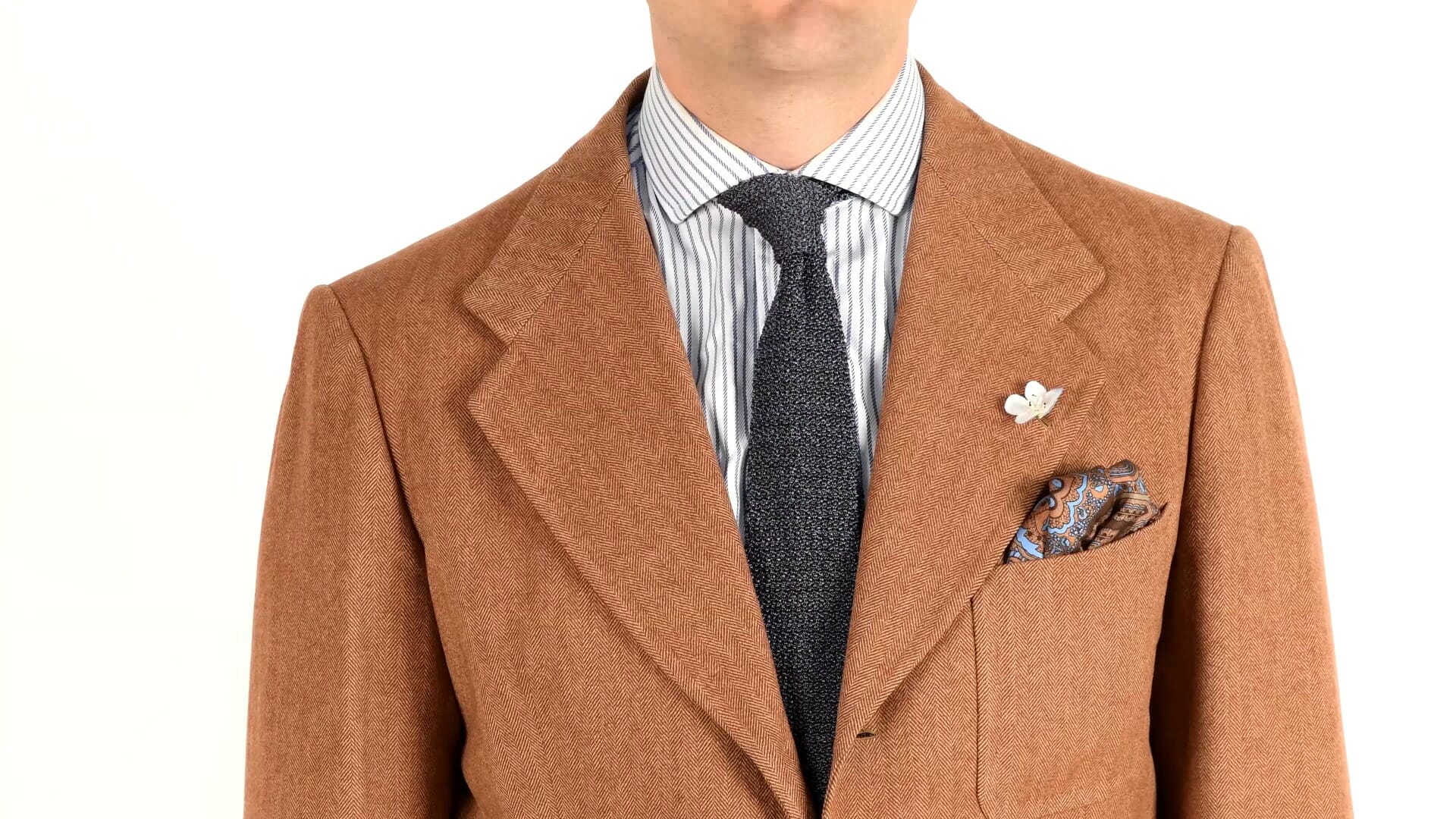
Gray and brown combination with Fort Belvedere accessories
Another thing you can do is to get more use out of the things you already have by coming up with new combinations that you might not have thought about beforehand. If you’re anything like me, sometimes you put together an outfit not because it’s the best possible look but just because you could find the ingredients that were on top of the pile. Not only could it be very limiting simply because of the small number of items, but you also may resort to putting and comparing the same things together over and over again.
So, when you have some time on your hands, you can actually think about outfits, put them together so when you’re in a rush you already know what to wear and what looks good together. Ideally, start with pieces that you do like but that you don’t wear very often. They’re already in your closet, they don’t cost you any additional money but there are ways to incorporate them into your outfits.
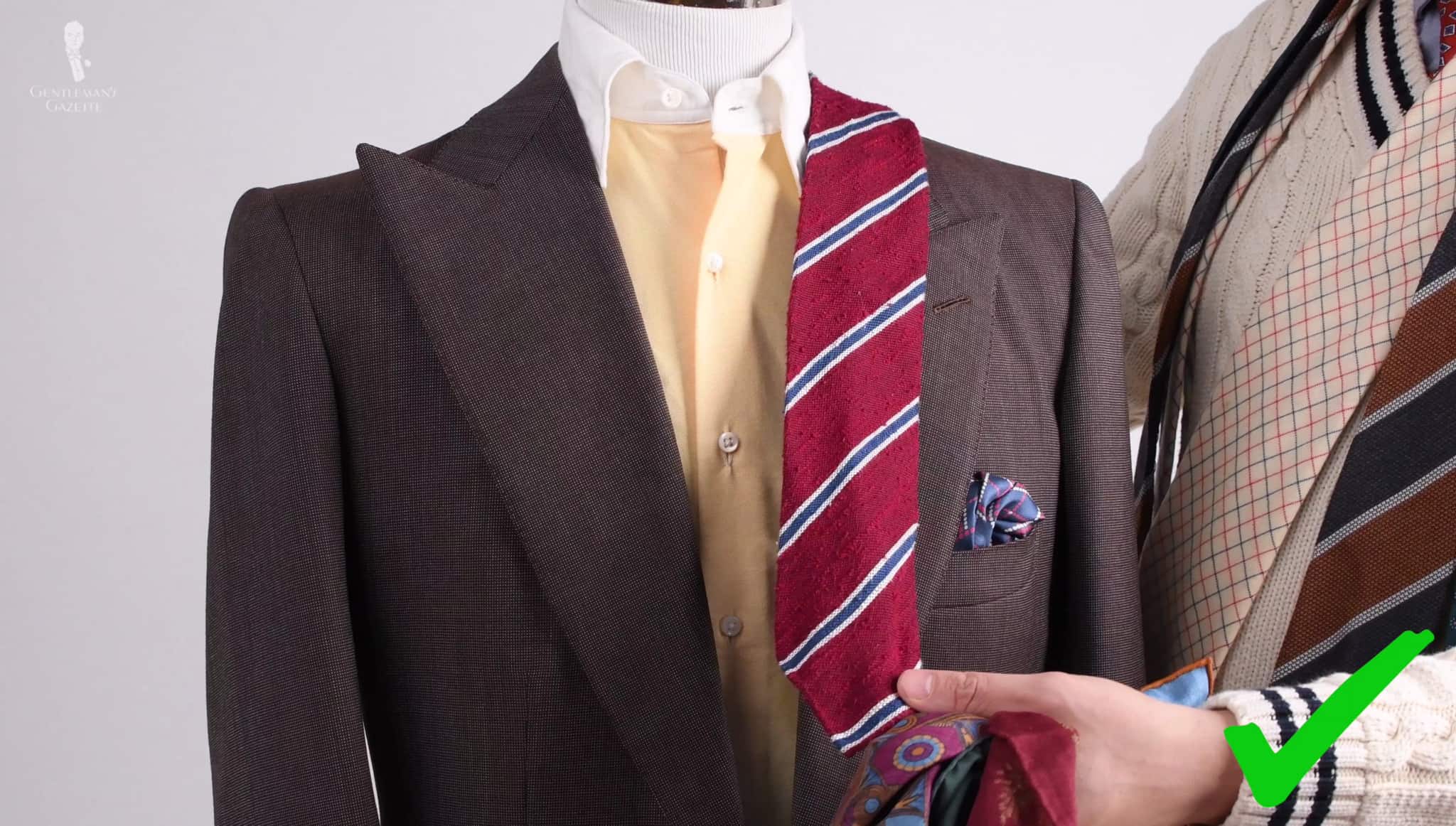
Practice matching everything that you have by holding them together.
It’s important to visually hold things together so you actually see what it looks like. Sometimes at first glance, you might not think it will work but force yourself to do it and then take a picture of the combination so you can visually remember it and they have an archive and you can easily come back to it when you are in a rush or in a moment where you can’t really recall what you’d put together that you liked back then.
3. Identify Your Stylistic Weakness & Tackle It
Everyone has an Achilles’ heel in their wardrobe. For example, for me, it’s the fact that my wardrobes are split out between a studio and my personal closet. Then sometimes, things just end up on a pile and I put together things that are just available to me right then if I have to rush out the door.
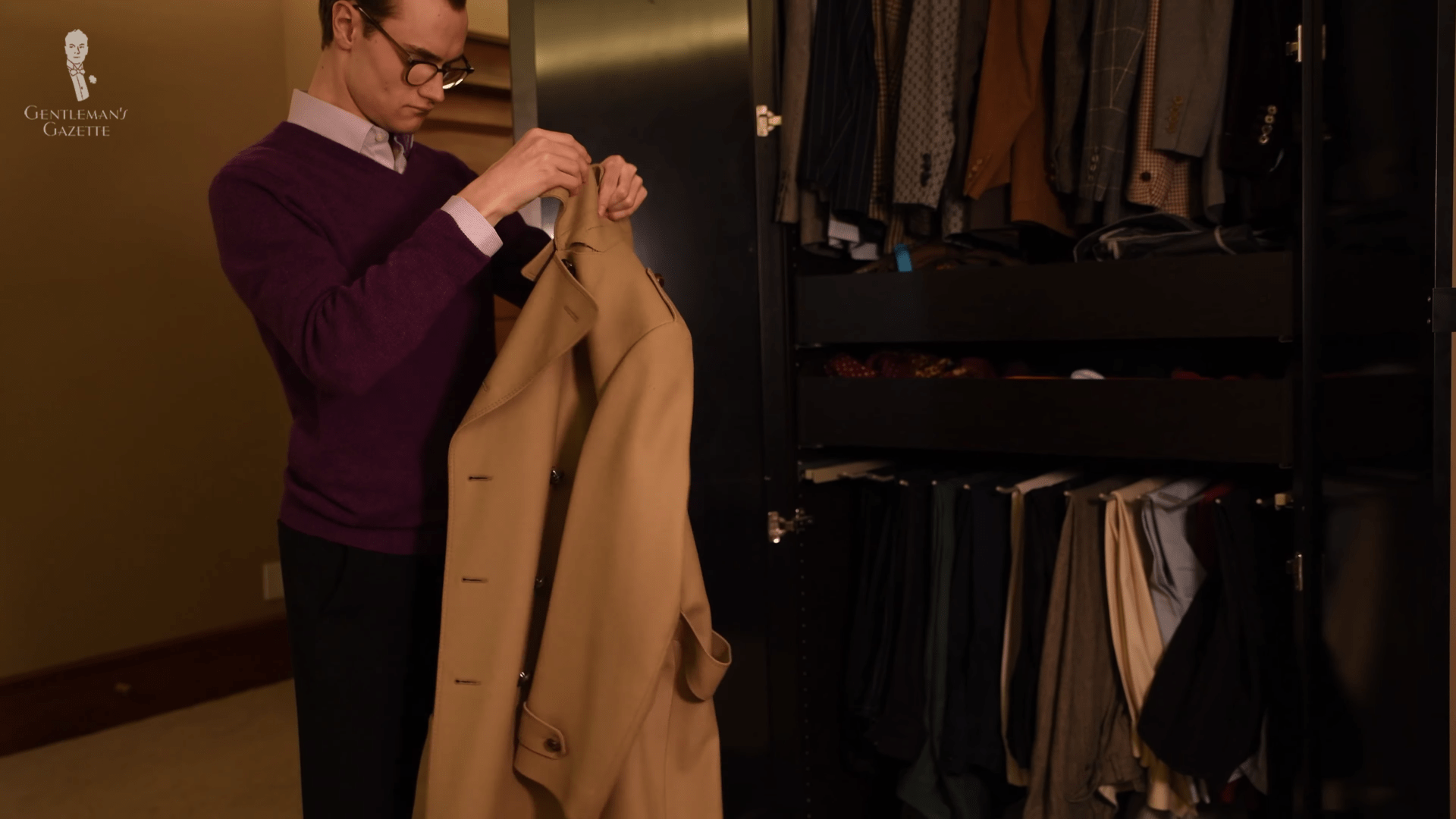
Preston in the process of tidying up and organizing his closet
Of course, the best solution to that problem would be a gigantic walk-in closet where all of my ties would be visible to me, all of my accessories, all of my shirts, all my shoes but sometimes that’s not a reality. We had planned to do a closet project, but now it’s on hold and we’ll just have to make do with what we have. However, for me, that means I could just regularly go through my wardrobe, see what I have, and don’t just put things on a pile but actually put them away so I can see what I have and combine it when I need it.
4. Hand-Wash Your Sweaters
This applies especially to your wool and cashmere sweaters or cardigans. Fortunately, with the advancement of washing machines, hand washing isn’t entirely necessary anymore but if you want to learn more about the topic, check out this in-depth video below. It’s part of a whole series on clothes maintenance and I’m sure you’ll enjoy it.
In an ideal world, you’d wear a sweater once and have your valet take care of it, clean it, wash it, and store it in your closet. Unfortunately, that’s not a reality for most of us. So, if you take care of your sweaters and how you wear them, let’s say, with a dress shirt underneath them, you may have to only wash them once or twice a season. If you’re at home with lots of time on your hands, now is a good time to start taking care of your wardrobe.
5. Properly Store & Rotate Off-Season Wardrobe
Sadly, most of us don’t have closets that are so large they can have their entire wardrobe at their disposal, at all points in time. Because of that, most people will have to resort to switching between the current season and the off-season. That means you have to probably store away your off-season garments in garment bags and put them, let’s say, in the attic and maybe not in the basement because otherwise, they may smell dusty. But of course, it depends entirely on your situation and where exactly you live and what the conditions are there.
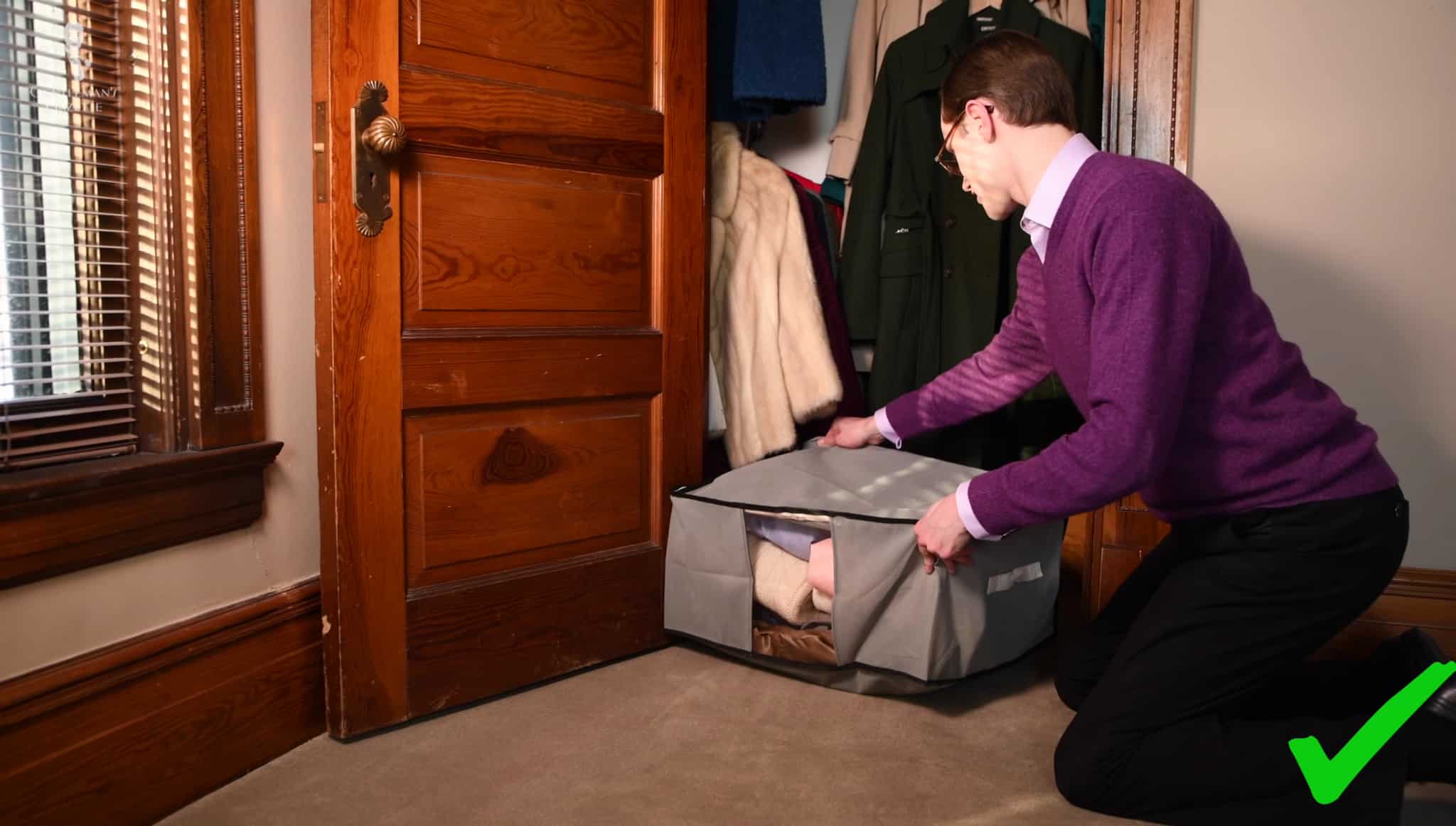
When the seasons start to change, our wardrobe changes as well.
So, why do you store your off-season clothes away? Ideally, you want to see everything that’s at your disposal that is currently appropriate for the season without being distracted by all the stuff that you can’t wear anyway.
6. Dust Off Your Outerwear With A Brush
While you’re rotating the seasonal wardrobe and storing away everything in nice garment bags, a clothes brush will really help you to elongate the lifespan of your garments. Why? Over time even if things hang in your closet, they get dusty and dust together with other stuff can be really hard on your clothes. By dusting them off, you will not only ensure that they don’t smell bad, but they will also last longer. On top of that, it saves you money because you won’t have to bring your clothes to the dry cleaner as often, which costs money and also shortens the lifespan of your garments. It’s a win-win.
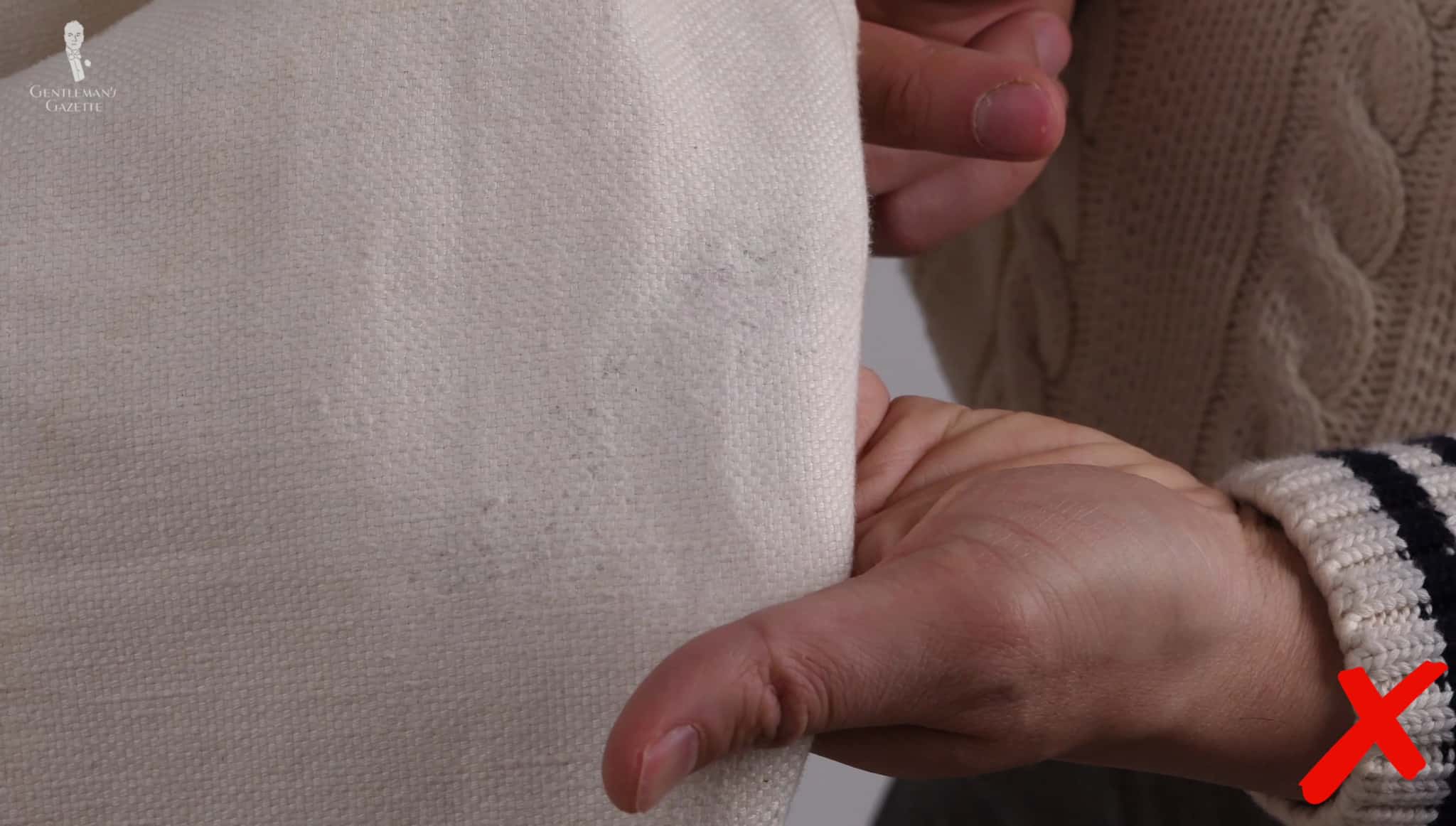
Use the clothes brush correctly to efficiently and effectively remove dust, dirt, and not damaging your garment.
So, what about the lint rollers with disposable tape? I strongly advise you not to use those because of the tape, they pull out loose fibers and you’re much more prone to end up with pilling. They’re also much more expensive because it’s a disposable item versus a quality clothes brush is something that you buy once in your lifetime; it will just last and serve you well. While a lint roller just gets a dust off a chop of your garment, a brush really helps to more deeply remove the dust from your blazers, jackets, and overcoats.
7. Learn How To Make Small Repairs Yourself
Of course, you could bring them to the alterations tailor but then you have to go there, you have to pay them. If you just have time at home and you’re watching a movie maybe, you want to learn how to sew on a button, for example. Even if you don’t think you have a threat or needle or the right tools, maybe you’ve come across a travel sewing kit which is often available on airplanes or at hotels. Maybe one of your garments has a little hole and if you fix it while it’s still small, it won’t become big.
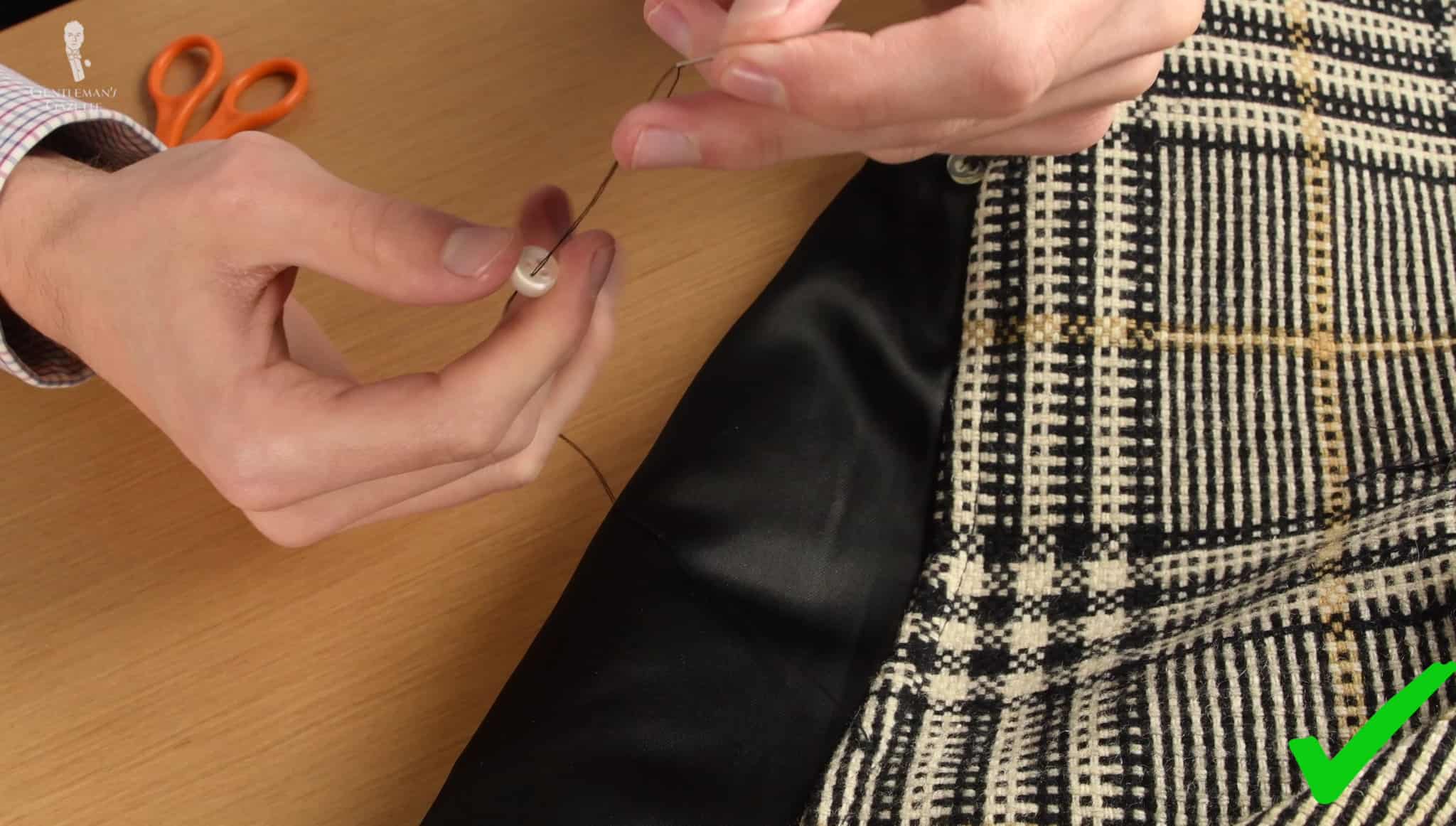
Have a sewing kit on standby in case you need to repair your garment
8. Iron All Of Your Shirts
That’s particularly true if you store them hanging on hangers but even if you fold them, having a nice, crisp shirt that’s already ironed will save you time in the morning so whatever you put it on normally and it will just be very satisfying. I know some people hate ironing and others love it, but even if you hate it, if you do it during a time where you wouldn’t do anything otherwise, it’s productive. It’s a great way to get ironed shirts.
You can turn on a podcast or maybe put up your computer and watch some Netflix because nothing makes you as prepared for the world is a freshly ironed shirt. Of course, once you’re done with your shirts, you can also move on to your pants and your slacks as well as your jackets and we created an in-depth series where we show you step by step how to iron a shirt, how to iron a jacket, as well as pants.
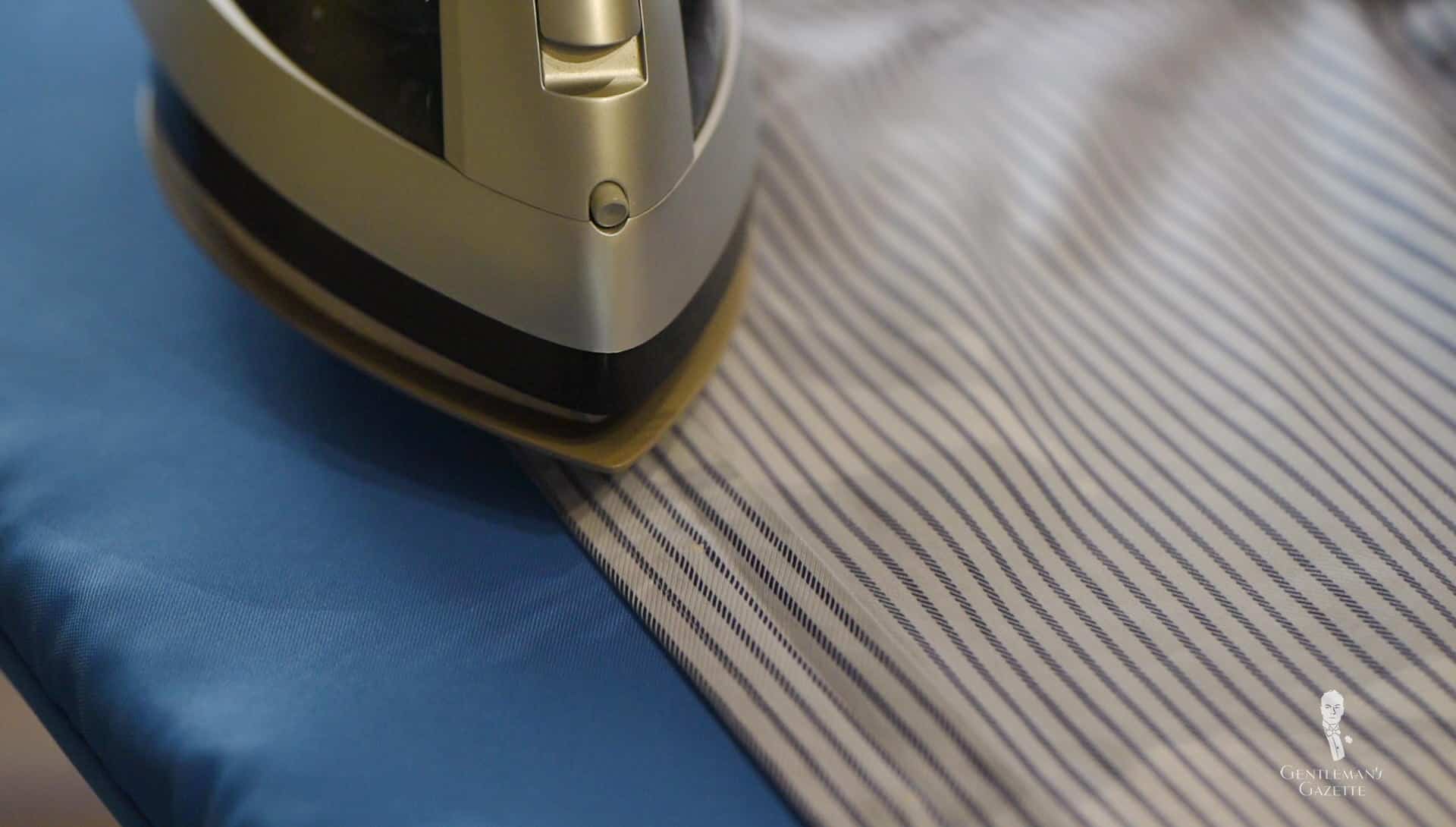
Iron the backside of your shirt placket first
9. Sort Out The Clothes That Need Alterations or Major Repairs
We inevitably end up with garments in our wardrobe that are maybe stained, have major damage, or just a little too big or a little too small and we have to take care of them so we can wear them the next time. The problem is, it’s very easy to forget about that and the next time you reach for it, you may not think that there is a big stain on your jacket, for example, so you put it on and you walk out the door; then, it’s just embarrassing.
Also, when you’re packing for a trip and you’re putting together your wardrobe and you realize, oh I wanted to have that fixed or altered but now I’m in a time crunch and that can’t bring it along because it’s too late. That’s always a bummer. The most economical way to deal with it is to just create a pile with all the items that need to go to the dry cleaner, all the items that need to be fixed or altered, and then go in one run. Oftentimes, your tailor may even give you a discount because you bring a bunch of things at the same time and you save yourself the cost of a trip every time back and forth.
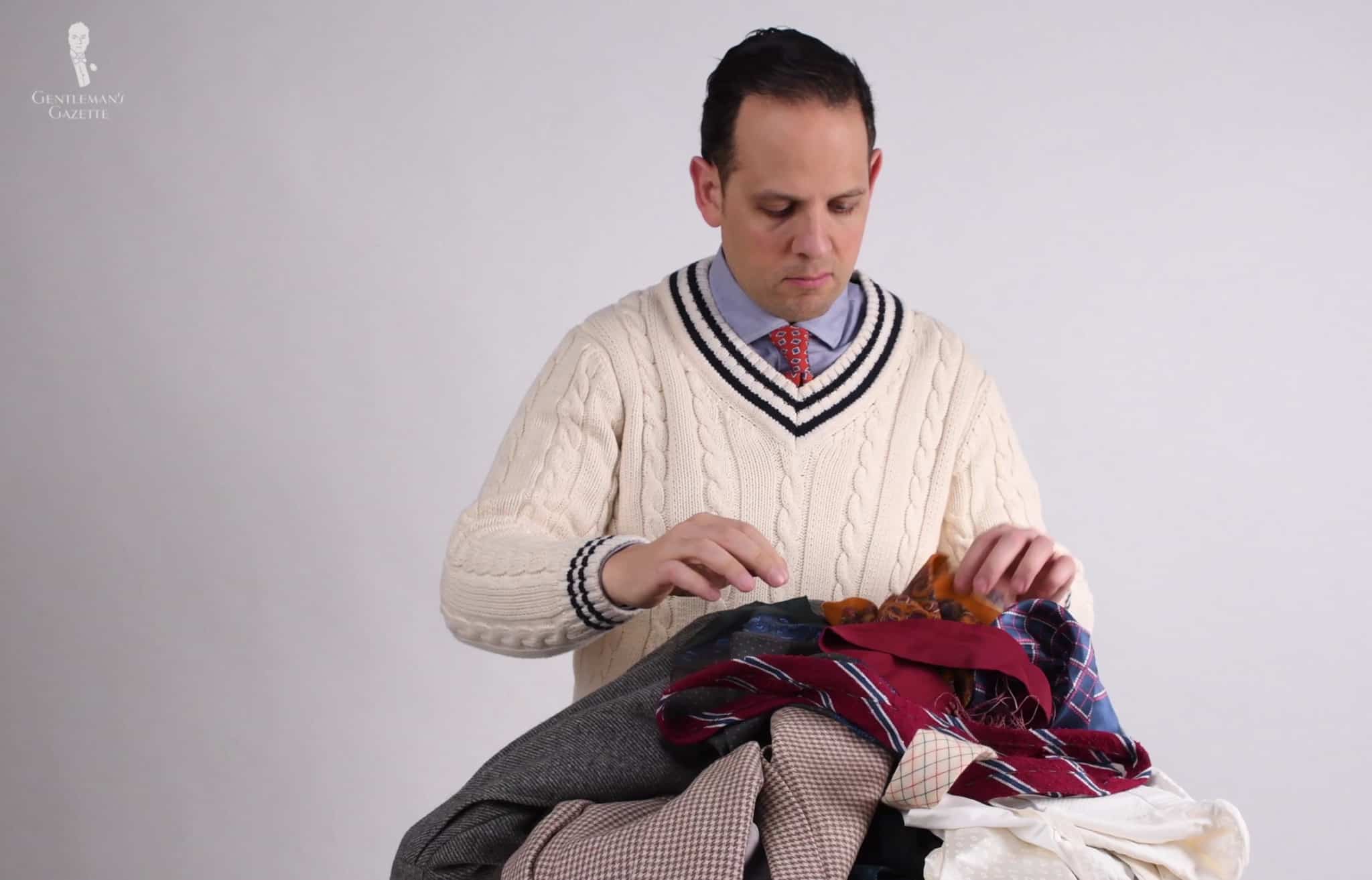
Sorting will help ensure you are always ready.
10. Polish Your Shoe Collection
If you want some good tutorials, head over to our friend Preston Soto from the Elegant Oxford, he has some really great tutorials on how to shine your shoes and make him look like new or like an entirely different pair again.
11. Invest In Wardrobe Maintenance Tools
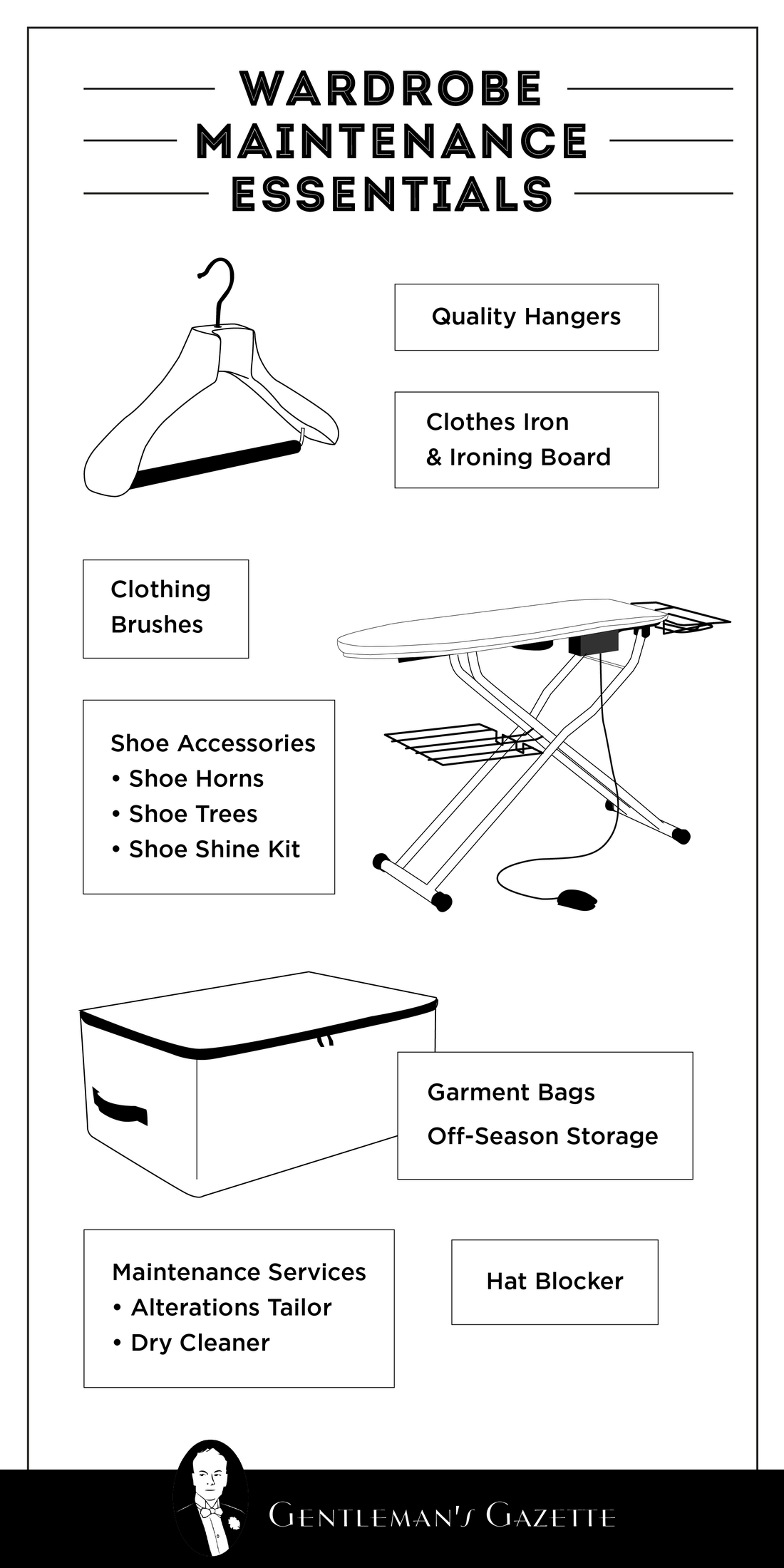
Wardrobe Maintenance Essentials
Last but not the least, maintaining your wardrobe not only takes time but often also tools so think about what you need, and to get some inspiration, you can check out our posts on wardrobe maintenance essential tools.